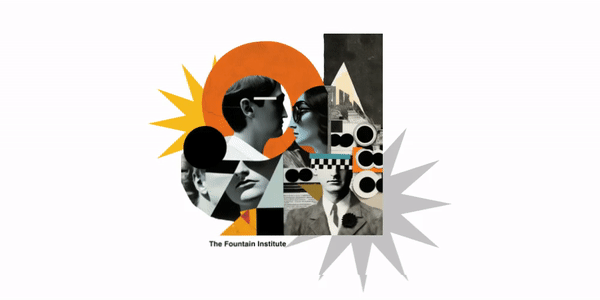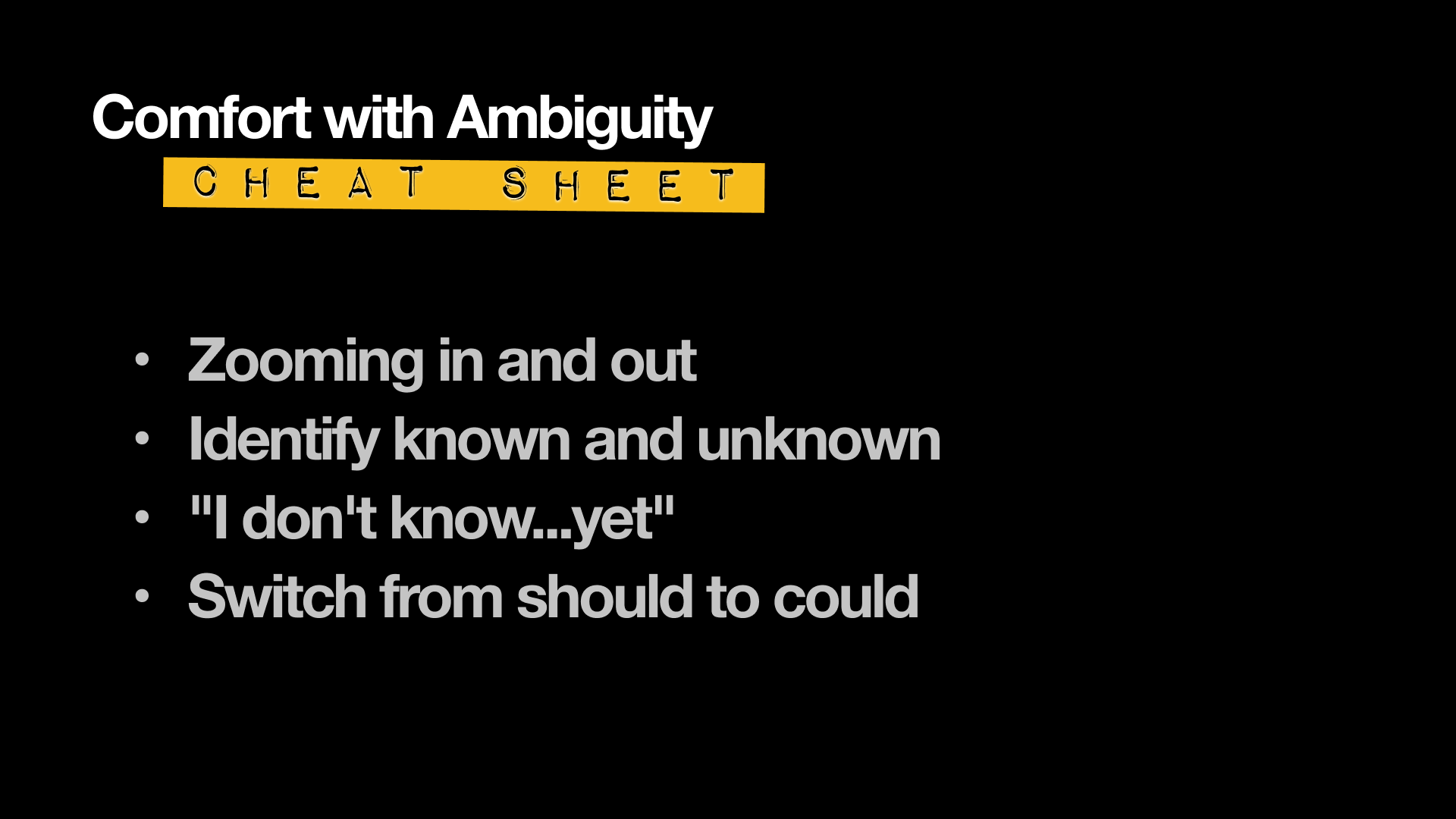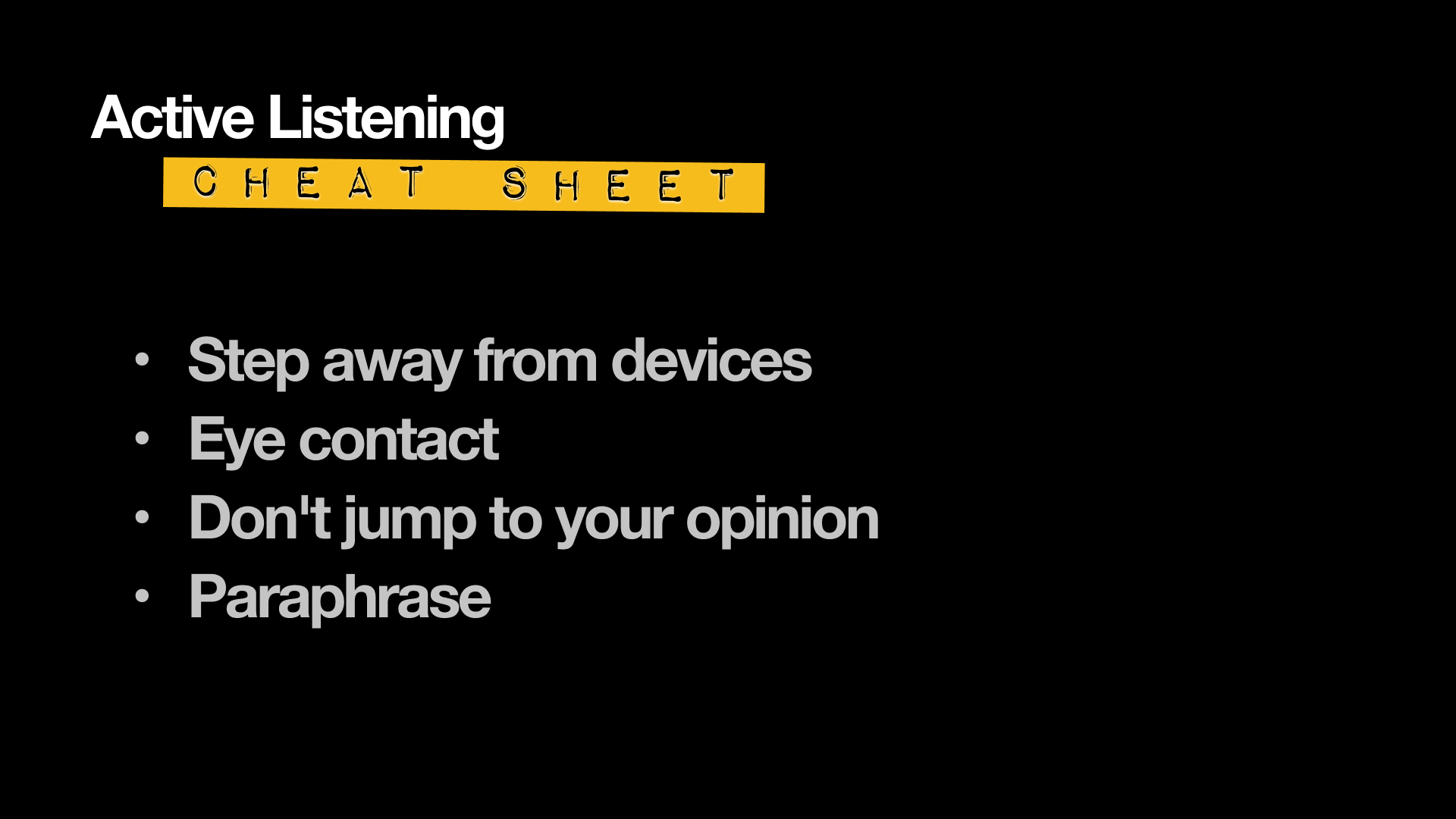How To Build Your Facilitation Skills (and Why You Should)
3 actionable strategies to boost your facilitation skills and become a more confident leader.
Reading time: 18 minutes
Facilitation is one of the most valuable skills a UX designer can master. If you’re not as confident as you’d like to be when it comes to running workshops, then stick with me.
In this guide, I’m going to show you how to level up your facilitation skills with 3 simple yet high-impact strategies. I’ll also explain why facilitation is such an important skill to build — and how it can benefit your design career.
This article is based on a webinar I held recently: How to Lead with Facilitation. If you want to see how I use each technique shared in this guide, check out the webinar recording — it’s full of examples and live demos.
What’s a Good Definition of Facilitation?
Before we jump into leveling up your facilitation skills, let’s first be clear about what facilitation is — and what it’s not.
At its very core, to facilitate is to make an action or process easy or easier.
Facilitation is the act of helping other people to deal with a process, or to reach an agreement or solution.
Watch this video to learn more about what facilitation is:
Throughout my career, I’ve come to realize that facilitation is leadership. And, as my understanding of facilitation has grown, I’ve also realized that my existing beliefs about what makes a great leader were all wrong.
Defining facilitation = debunking outdated leadership stereotypes
I never thought I could be a leader when I was a kid.
I felt that a leader was a great public speaker, had all the correct answers, had to tell people what to do, was focused on perfecting their skills… and it didn’t help that they were all men (and I’m not).
As I grew up, the world did too. Those "leadership" qualities that might have worked for my grandparents began to soften.
Today, leadership is more human-centered. Our job as leaders is to create environments that make it easier for people to perform at their best.
To become a human-centered leader, you must become a better facilitator.
I’ll show you how to do that soon. But first, let’s outline what makes a good facilitator in the first place.
What Makes a Great Facilitator and What Are the Most Important Facilitation Skills?
One of the most important things a great facilitator does is create a space for participants to feel heard, valued, and included. When this is achieved, it helps people share their ideas and allows for different perspectives to coexist.
But creating this space doesn’t just happen by chance. It happens because great facilitators possess certain skills.
The most important facilitation skills include:
Clear communication
Active listening
Asking the right questions, at the right time — and knowing how to ask them
Objectivity — being able to suspend your judgment
Focus — always moving towards the end goal
Keeping an open mind
Adaptability and flexibility — good facilitators can roll with the punches!
I explain more about what makes a great facilitator in this video:
Ok, enough talk. It’s time for some action! Next, I’m going to show you 3 techniques you can use to level up your facilitation skills.
How To Level Up Your Facilitation Skills: 3 Actionable Strategies You Can Start Using Today
We know what makes a great facilitator. But how do you get there?
Here are my 3 tried-and-tested techniques for boosting your facilitation skills:
Get comfortable with ambiguity
Suspend your judgment
Practice active listening
For each strategy, I’ll share a handful of action items you can try out next time you’re leading a workshop. Proceed to step 1!
1. Get comfortable with ambiguity
When facilitating workshops, you plan for specific outcomes, but you’re open to different possibilities. This means you have to be comfortable with ambiguity.
The same goes for leaders. You'll need to help your team take calculated risks.
Let's look at how we can build our comfort level with ambiguity.
What is ambiguity? It’s being open to more than one interpretation.
The goal here is not to remove ambiguity but to get more comfortable with it and find ways to feel more confident about what we know and don't know.
As designers, we work all the time without having all the information. We develop new ideas and push forward with one solution…but there could be 30 other ways to solve any problem.
And thank god there isn't always one correct answer, or an algorithm would probably take all of our jobs.
How to get comfortable with ambiguity:
Zoom in and out: Make sure you go back and forth between looking at the larger context and the details.
Identify known and unknowns: List what your team knows and doesn't know. Then go and find out more information on the unknowns.
Start saying "I don't know…yet": Practice saying "I don't know…yet" and follow up with questions that help clarify the extra information we need to discover.
Switch from "should" to "could": Try changing from where you narrow the possibilities by using the word "should”, to where you open up room for more ideas to be possible using "could."
2. Suspend your judgment
As a facilitator and a leader, you need to practice suspended judgment.
I’m not saying you’re not allowed to have any judgment; we need to practice not jumping to and running with our immediate response.
What happens when we suspend judgment? It builds trust and agency in our team and allows different opinions to be voiced. That’s a true facilitation (and leadership) skill!
How to suspend judgment:
Take a pause: Silence is vital. Take a moment to listen to the other person's words and process what you think you heard.
Ask a metacognitive question: Ask the person to think about their thoughts and what they saw, read, or heard that made them come up with the opinion they just communicated to you.
Paraphrase: After they have answered, you recap what they said but get at the bigger picture. It’s powerful to hear how someone else listened to what you just told them.
3. Practice active listening
What is the difference between being listened to and being heard?
Think back to the last time you felt heard by someone else. What were they doing to make you feel that?
If you're having a hard time, picture an instance when you felt you weren’t being heard. Was that person on their phone saying uh-huh and jumping to conclusions?
Active listening is hard, and we must practice it as it is essential to building trust and openness in a team.
How to actively listen:
Step away from devices: This sounds so obvious, but it is actually quite rare that we physically put our devices away when listening to someone else. This is the easiest first step for a workshop: put your personal devices away and ask everybody else to follow suit!
Eye contact: Another simple but powerful tip is to look the person you are listening to in the eyes. This applies both in-person and virtually.
Don’t jump to your opinion: In listening, don’t start to think about what you want to say next or how this reminds you of something you experienced. Just sit with what the other people are saying.
Paraphrase: It’s powerful to hear how someone heard what you just told them; it lets you know they really registered and processed what you said.
Why You Should Care About Leveling Up Your Facilitation Skills
So you’ve read through all my techniques (or watched them) but you’re still wondering…why should I actually care about building my facilitation skills? What’s in it for me?
You can watch this video of me explaining, or continue reading:
Let’s go full circle back to the topic of leadership.
Earlier in this post, I talked about how facilitation is synonymous with leadership — and about how, in my early life and career, I didn’t identify with the traditional definition of a leader.
Feeling very much not like a leader, I sought different ways to engage and support other people. And I found them in facilitation.
In the process, I discovered that facilitation skills are much better suited to the modern workplace than those traditional leadership qualities of way back when.
The world we work in today is much more complex. We work with cross-functional teams to develop solutions together, and that’s extremely tricky. Every day we have to ask ourselves: How do we keep the lines of communication open? How can we make sure that cross-functional teams are thriving together?
This is where facilitation comes in. If we can listen to each other, we can build solutions together.
In the current workplace, we don’t just need leaders in the traditional sense. We need facilitative leaders.
Facilitative leaders = leaders who create environments that make it easier for their teams to perform their best.
Being a better facilitator will make you a better leader
In section 2 of this post, I outlined what makes a great facilitator. You can actually replace the word ‘facilitator’ with ‘leader’ and all of those things I listed still apply.
So here’s what’s in it for you: Building your facilitation skills and becoming a great facilitator automatically equips you with a leadership skill set.
If you’re in a leadership position, facilitation will make you better at your job.
And what if you’re not a leader by name? What’s the benefit of facilitation for you?
Even if you don’t have ‘leader’ in your job title, facilitation will position you as a leader. I like to say that you can prototype tomorrow’s leadership skills by facilitating workshops today.
“You can prototype tomorrow’s leadership skills by facilitating workshops today.”
Facilitation skills can open the door to a great number of different roles throughout your design career, such as agile coach, service designer, design thinking facilitator, strategic designer (learn what strategic design is here), product consultant, and even founder (I never thought that would be in the stars for me, yet here I am…)
In short, here’s why you should care about developing your facilitation skills:
Facilitation skills = leadership skills
If you’re already a leader, being a better facilitator will make you better at your job
If you’re not already in a leadership role, facilitating workshops and mastering those skills today will equip you with a leadership skill set for tomorrow
Facilitation skills are key to thriving in cross-functional environments
Whew. You must be convinced by now!
How To Lead With Facilitation: The Takeaway
If you take anything away from this guide, let it be this: mastering facilitation skills will bring huge value to your design career. Facilitation = effective leadership = success in today’s cross-functional, collaboration-centric world of work.
Next time you lead a workshop, bring in those techniques I showed you:
Get comfortable with ambiguity
Suspend your judgment
Practice active listening
Learning Resources for Facilitation
Read about The Facilitation Mindset over on Competendo — The Digital Toolbox
Read how visual thinking strategies (VTS) can help with successful facilitation in Visual Thinking Strategies: Facilitate with Art by Hannah Baker
Learn more about how to lead with facilitation in The Art of Facilitative Leadership: Maximizing Others’ Contributions by Jeffrey Cuffaude for The Systems Thinker
Learn how to adapt your facilitation skills for the remote environment with this guide on How To Facilitate a Successful Remote Workshop by Greg Storey for InVision
Try a FREE 7-day email short course to see how you enjoy facilitation
Learn how to design and run successful workshops in this free masterclass (includes useful resources)
For advanced, hands-on workshop facilitation training, take this 22-day course by The Fountain Institute
For more insight, watch my facilitation masterclass in full:
Are there any more facilitation skills or tips you’d add to this guide?
Share them in the comments, and I will add them to the article and credit you!










